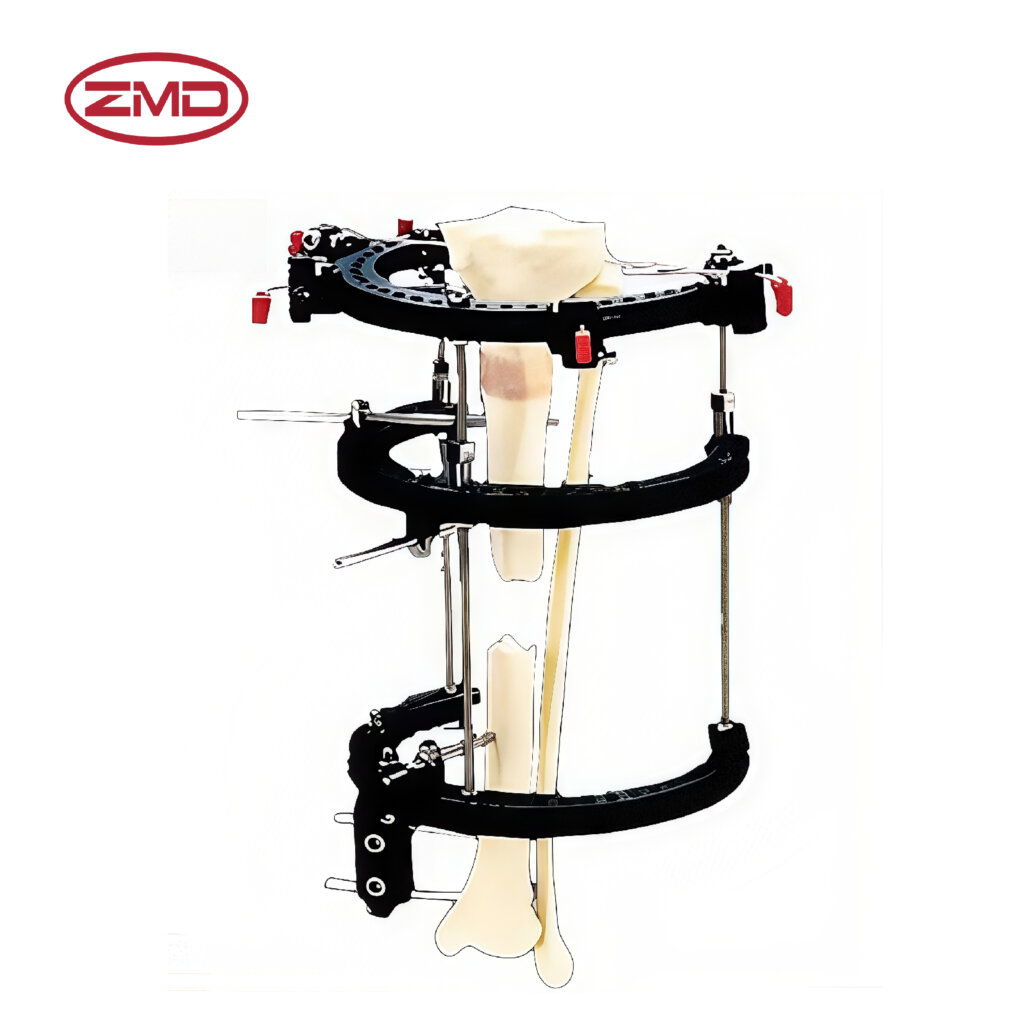
- Home
- About Us
- Products
- Trauma Internal Fixation System
- Spinal Internal Fixation System
- External Fixation
- Artificial Implants System
- Sports Medicine
- Power tools
- VSD System
- Instruments
- Medical supplies
- Blog
- Personnel Profile
- Contact Us
Phone line
| CODE | PRODUCTION | DESCRIPTION | MATERIAL |
| ZK103 | MiniRail Lengthener/Fixator Clamp Cover Screw | / | S.S |
The screw is typically made of high - quality stainless steel or a durable alloy. These materials are chosen for their strength, which enables the screw to withstand the mechanical forces exerted during the treatment process. The biocompatibility of these materials is also crucial as the screw is in contact with the body or implanted orthopedic devices. Biocompatible materials reduce the risk of adverse reactions such as allergic responses or inflammation, ensuring the safety and well - being of the patient.
The installation process involves inserting the screw through the clamp cover and into the fixator or lengthener. This is done using a specialized tool. The tool provides the necessary torque to ensure that the screw is inserted properly and tightened to the correct degree. The precise installation is essential to achieve a secure fit and to ensure that the screw can effectively perform its function of holding the clamp cover in place.
Removal of the screw requires a trained professional and the appropriate tools. While it is possible to remove the screw when necessary, such as for device maintenance, replacement, or adjustment, it is not a simple task that can be done casually. The professional's expertise is needed to ensure that the removal process is carried out without damaging the clamp cover, the fixator, or the surrounding tissues
On the contrary, the screw is designed to enhance the functionality of the clamp cover. By providing a secure attachment, it ensures that the clamp cover stays in its intended position. This stability allows the clamp cover to perform its functions effectively, such as protecting the fixator or lengthener from external contaminants and physical damage.
There are different sizes of the screw available to fit various clamp cover and fixator configurations. The range of sizes is designed to accommodate the diverse needs of different patients and treatment scenarios. The availability of multiple sizes ensures that the screw can provide a proper fit for the specific orthopedic devices being used.
In some cases, the screw can be reused if it remains in good condition and is properly sterilized. The decision to reuse the screw depends on factors such as the extent of wear and tear, any damage that may have occurred during the previous use, and the ability to effectively sterilize it to meet the required hygiene standards.
The screw has a specific thread design and a tightening mechanism. The threads are carefully engineered to engage with the corresponding holes in the clamp cover and the fixator/lengthener. When the screw is tightened using the appropriate tool, the threads grip tightly, creating a secure and snug fit. This fit is maintained even under the forces exerted during the patient's movements and the treatment process.
Warranty terms for the screw may vary depending on the manufacturer and supplier. The warranty provides assurance to the user regarding the quality and performance of the screw. It typically covers manufacturing defects and may offer different durations and conditions depending on the specific product and the policies of the company.
The screw is specifically designed for the Pennig MiniRail Lengthener/Fixator and may not be compatible with other types of fixators. Its dimensions, thread design, and other characteristics are tailored to fit the unique requirements of the Pennig MiniRail system
Regular check - ups during the treatment period are recommended to ensure that the screw remains tight and secure. The frequency of these check - ups may depend on factors such as the type of treatment, the patient's activity level, and the specific instructions provided by the medical team. Checking the tightness of the screw helps prevent any loosening that could lead to problems such as the clamp cover becoming dislodged and compromising the protection of the fixator or lengthener.
Oh yeah! I have to mention their payment options and discount offers, which are awesome! Those payment methods are as flexible as moving water and can be chosen freely according to our cash flow situation. And the frequent discounts, like a timely rain, have been moisturizing our financial statements time and again, and have had a rocket-like positive impact on our profits! With ZMD, I feel relaxed and at ease when it comes to purchasing!
Send us a message if you have any questions or request a quote. Our experts will give you a reply within 24 hours and help you select the right valve you want.
Book Now
If you are looking for professional orthopedic medical product solutions, don’t hesitate to contact us now!

We are an integrated manufacturer specializing in orthopedic medical industry, providing high quality and reliable orthopedic medical products to customers worldwide.
Copyright © 2024 ASK Project